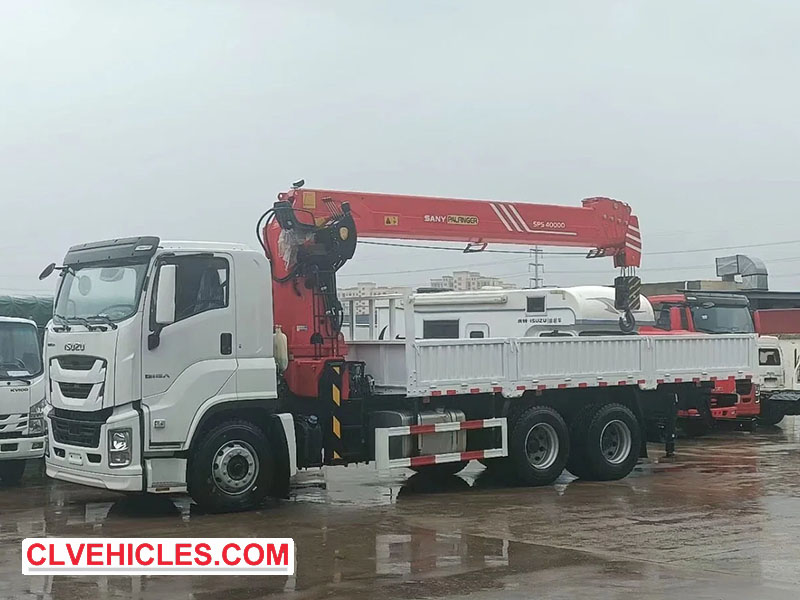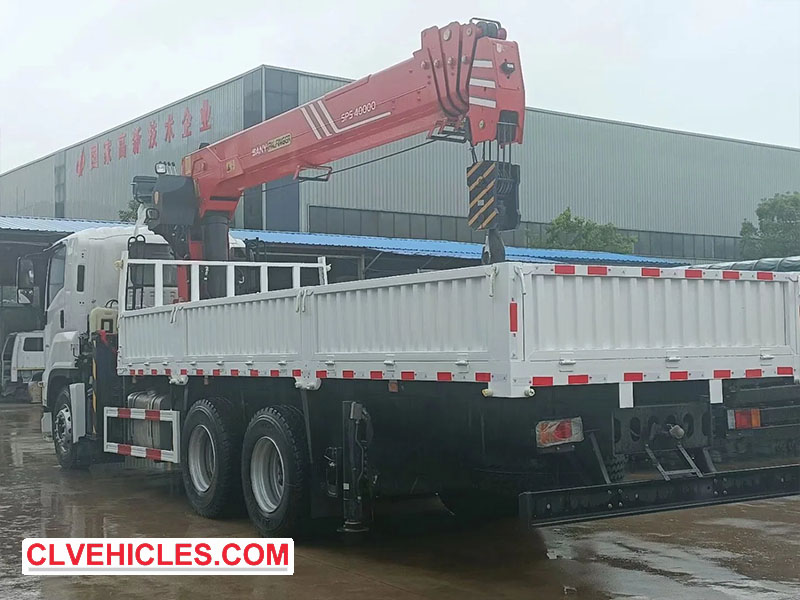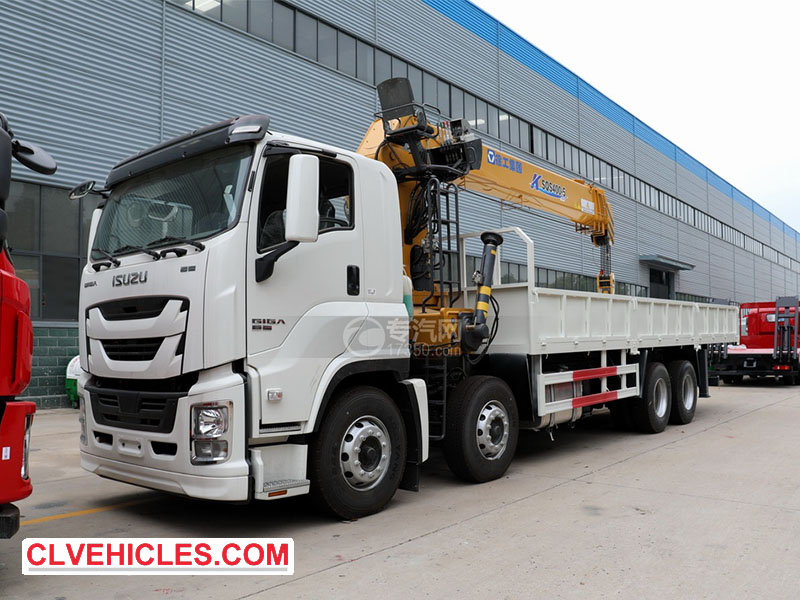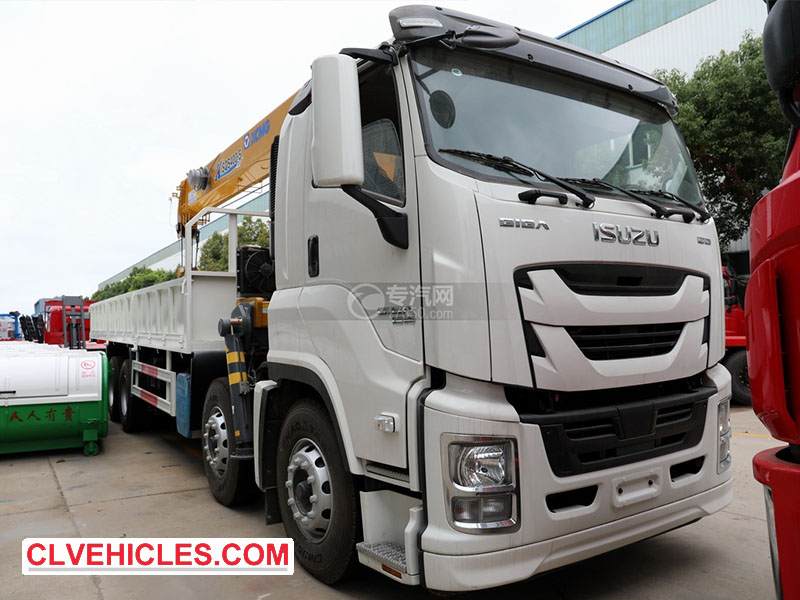The traditional structure of a ISUZU Truck Mounted Crane usually includes a lifting mechanism, a slewing system, a slewing device, a suspension rod, and a chassis. With the continuous advancement of technology, the manufacturing process and structural design of each component have been significantly improved, resulting in substantial changes in both internal architecture and appearance. Modern vehicle mounted cranes have several key features:

These ISUZU truck mounted cranes are capable of placing loads on the ground, below the ground, or at a height higher than the crane itself. They are equipped with independent power systems that do not require external power sources such as feeder cables or conductive devices. In addition to standard lifting functions, smaller truck mounted cranes can also be equipped with various accessories such as shovels, grab buckets, trenchers, and shovels to perform various tasks. Their mobility eliminates the need for fixed infrastructure such as elevated tracks, thereby reducing initial investment, production costs, and long-term maintenance expenses.

In order to improve operational safety, the hydraulic system of the truck with crane is equipped with overload safety valves, buffer valves, and hydraulic locks. These components can prevent accidents caused by overload, stall, or sudden rupture of oil pipes. In addition, the crane is equipped with a load torque indicator and a height limiter to avoid overloading or excessive extension of the boom. The winch and pulley mechanism are also designed with devices to prevent the steel wire rope from slipping or derailing.

Precautions for operating a ISUZU truck with crane
The operator must have a comprehensive understanding of the crane's capabilities, limitations, and unique operating characteristics. They should be fully familiar with the content of the operation manual and load diagram, including all symbols and warnings, and be able to calculate or determine the actual lifting capacity of the crane. Regular inspections and maintenance must be carried out in accordance with the manufacturer's specifications. Detailed transportation logs should be kept to record all inspection, maintenance activities, and repairs.

Before lifting, the load must be correctly labeled, secured, and its placement position confirmed. Although the operator is not directly responsible for determining the weight of the load, failure to verify this information with the supervisor may result in responsibility for any subsequent consequences. All factors that affect lifting capacity, such as environmental conditions and load characteristics, must be considered and the operating weight adjusted accordingly.

The operator must be proficient in rigging procedures and ensure correct execution during the operation process. Maintaining clear communication with signalers is crucial for safe and efficient performance. All actions should be executed smoothly and safely. When the crane is not in use, it must be parked and secured correctly according to standard procedures.
To know more about our ISUZU truck with crane, please check below website:
https://www.isuzuvehiclescl.com/isuzu-truck-with-crane